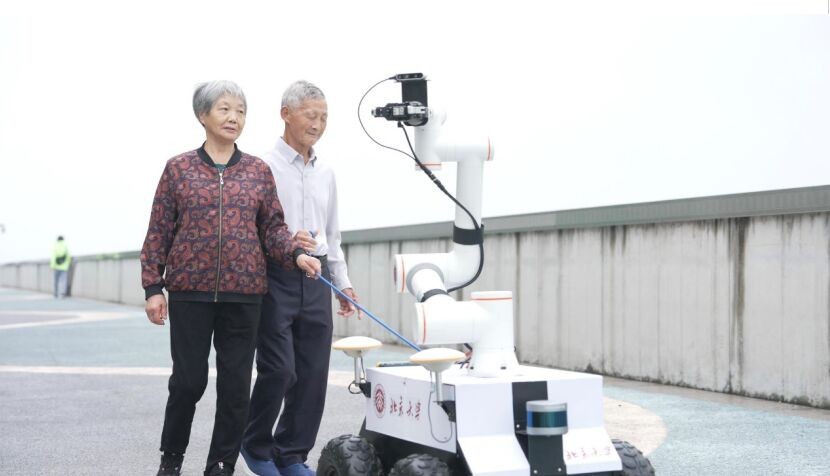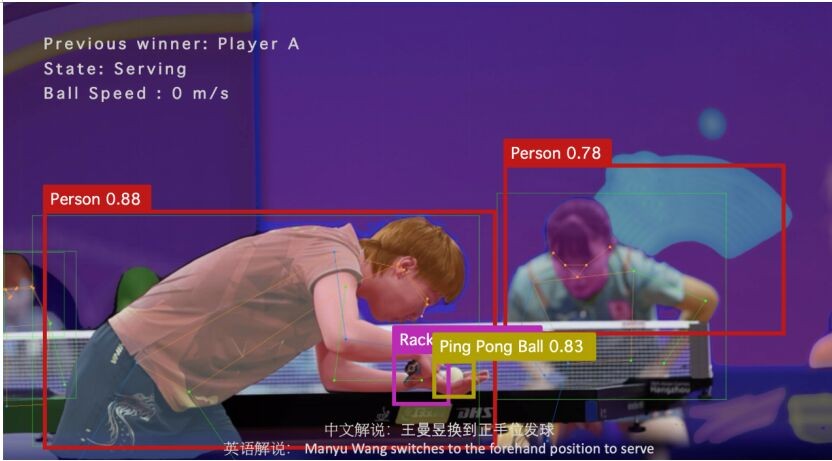Top 5 Cutting-Edge Technologies at the Asian Games: AI 'Tour Guides', AI Commentary, AI Referees...
-
"Compared to previous Asian Games, the Hangzhou Asian Games are likely the most intelligent edition," remarked Vinod Tiwari, Acting Director General of the Olympic Council of Asia, during a media interview.
The Hangzhou Asian Games officially concluded on the evening of October 8. While Team China set a new record with 201 gold medals, the various intelligent applications and technological innovations during the event were equally dazzling.
According to official data from the Asian Games, this edition featured nearly 20 pioneering and first-of-their-kind applications and technologies. Below, we highlight the five most prominent technological applications and their underlying technical details.
1. The 'Warmest' Cutting-Edge Tech—AI Companion Assistant 'Weiming'
During the Hangzhou Asian Games, at some volunteer service points in the city, a robot-like AI assistant was deployed to assist visually impaired individuals.

The name 'Weiming' originates from Peking University's famous Weiming Lake. Under the guidance of Professor Huang Tiejun and researcher Zhang Shanghang from Peking University, student Zhuang Qining's team developed the 'Weiming' embodied intelligent robot software service system. This system provided navigation guidance and assistance services during the Asian Games and received recognition from People's Daily.

Unlike traditional robots, 'Weiming' is based on the team's self-developed perception-generation integrated multimodal large model. It can accurately perceive and understand visual scenes both inside and outside venues, generate precise and rich language descriptions, transform complex human instructions into specific actions, and improve model generalization through efficient fine-tuning of end-cloud collaborative models, enabling quick adaptation to new scenarios.
Reportedly, this system can provide guided tours for spectators, assist visually impaired individuals with navigation, interpret their needs to complete corresponding tasks, and help them retrieve dropped items.
2. The Most Eye-catching Black Tech - Discus-retrieving Robotic Dogs
At the Asian Games athletics venue in Hangzhou, several robotic dogs transporting discus became the center of attention.
These are the 'robotic dogs' transporting discuses at the Asian Games. Each dog is equipped with a slot on its back capable of carrying 1-2 kg discuses, swiftly delivering sports equipment along pre-set routes. After completing tasks, the robotic dogs 'lie down' by the field awaiting further instructions. Additionally, smaller robots can perform actions like lunging forward, sitting, or bowing.
It's reported that each robotic dog covers an average round-trip distance of about 120 meters. With 60 round trips per competition, this replaces the traditional 7,000-meter workload for staff in discus events, significantly reducing human labor.
The Most 'Customized' High-Tech: High-Speed Motion AI Commentary System
The Asian Games featured not only robotic dogs retrieving discuses but also AI-powered event commentary.
Developed by Peking University's Qining student team, this high-speed motion AI commentary system uses pulsed signals from high-speed cameras to detect objects and athletes. It captures key moments in sports events, generates high-quality highlights and relevant data, and employs multimodal large-model algorithms and deep learning models to analyze this sports data. Based on the analysis, the system provides real-time personalized commentary services, offering tailored experiences for audiences in various languages.
Taking table tennis commentary as an example: when two players are competing, the system can capture and interpret athletes' 3D postures, analyze ball trajectories, and generate precise descriptions.

More notably, this represents the first implementation and experimentation of multimodal large model technology in a major international multi-sport event.
IV. The Fastest 'Black Technology' - AI Smart Editing
As is well known, the core systems of this Hangzhou Asian Games have achieved 100% cloud migration. This means that different versions of the same event can be generated through the cloud platform. More importantly, it enables the realization of an entirely new video editing method.
It is understood that the Alibaba Cloud AI Smart Editing used in the Asian Games Media Center can automatically stitch together multi-angle shots with one click, adding effects such as subtitles and transitions.
For example, editing a 100-meter freestyle highlight reel previously required constant switching between wide shots, medium shots, and close-ups. Now, simply selecting the athlete can generate a multi-track composite shot with one click. By adding slow-motion close-ups to match the background music and proofreading AI-generated subtitles, a high-quality video is completed quickly and efficiently.
Five, The Most Impartial Black Technology - AI Referees
Traditional human referees may miss certain actions due to limited perspectives, visual obstructions, or momentary judgment errors. In contrast, AI referees can capture details in real-time through multiple angles and high-frame-rate cameras, ensuring more accurate decisions.
According to official disclosures, this year's Asian Games introduced AI referee scoring technology to provide fairer and more precise judgments for competitions.
The AI referee system uses AI infrared tracking technology combined with an automatically generated scoring system to evaluate each athlete. It also analyzes various body parameters and movement angles of the athletes, completing the scoring based on international standards.
AI referees are unaffected by emotions, pressure, or any external factors, making judgments solely based on facts and predefined rules. They are hailed as the most 'impartial' technology.
We look forward to these cutting-edge technologies gradually integrating into the lives of ordinary users, bringing more convenience, efficiency, and sustainability to our daily lives.
